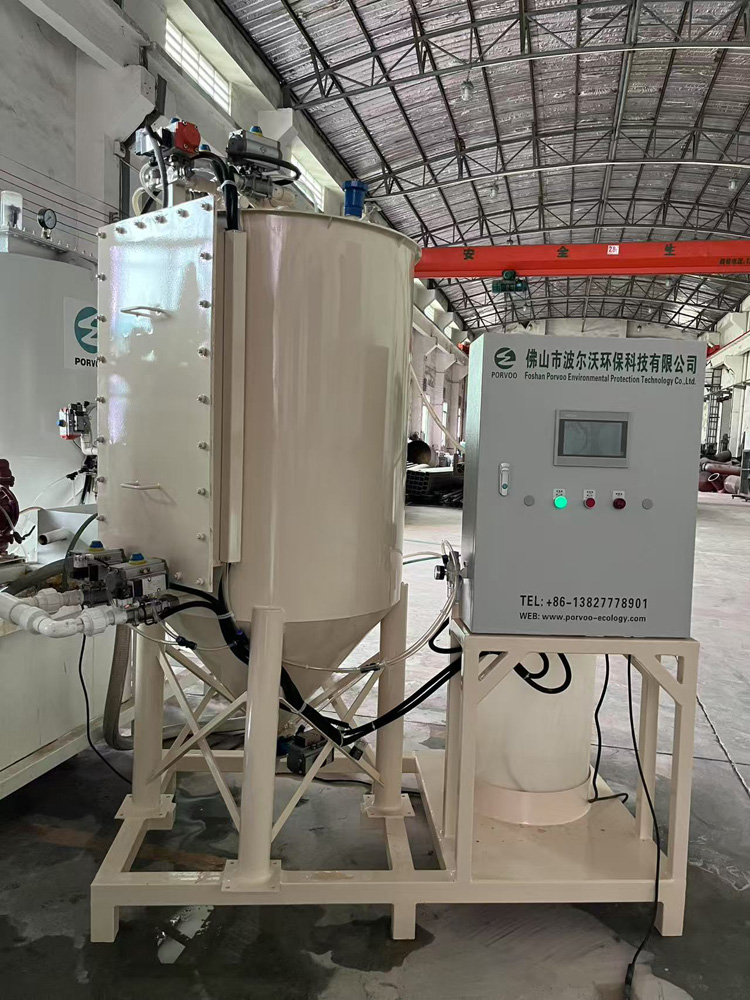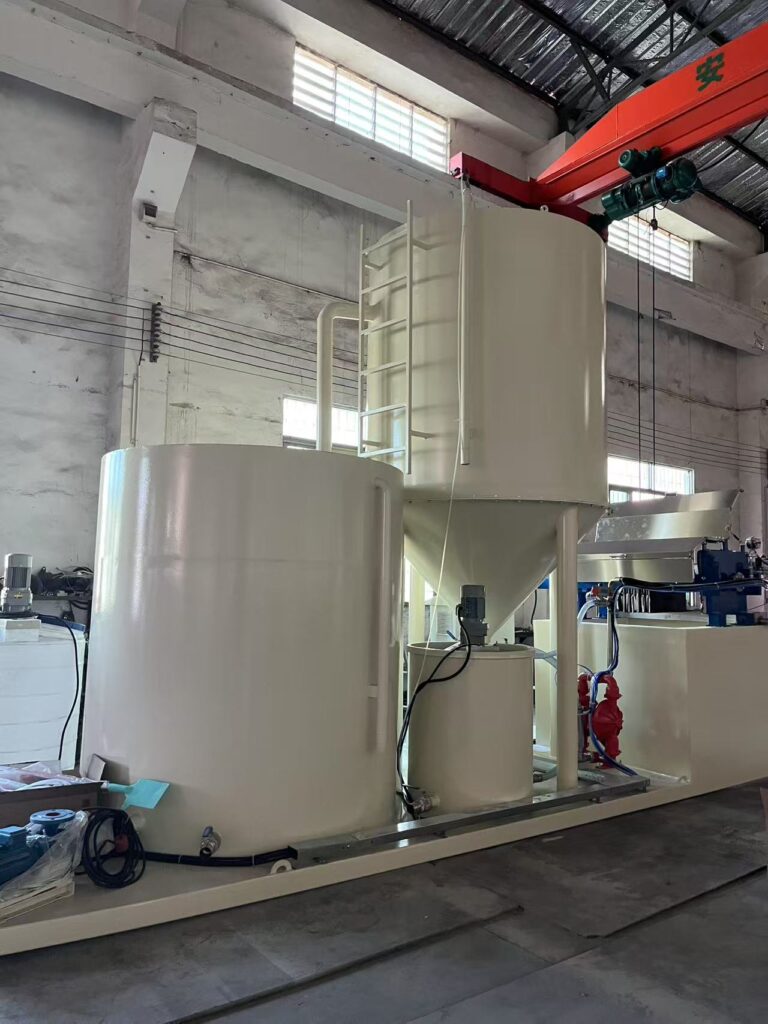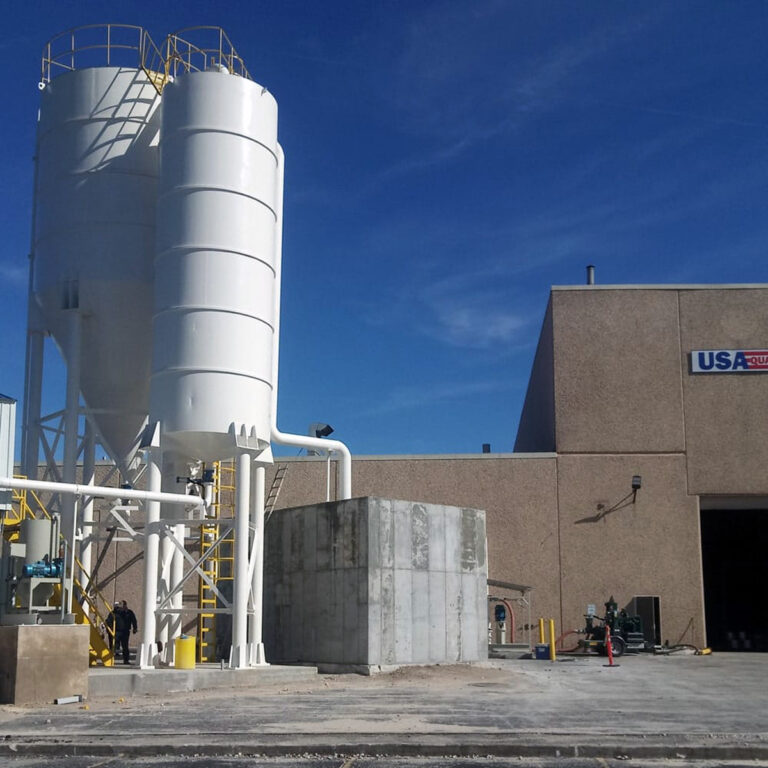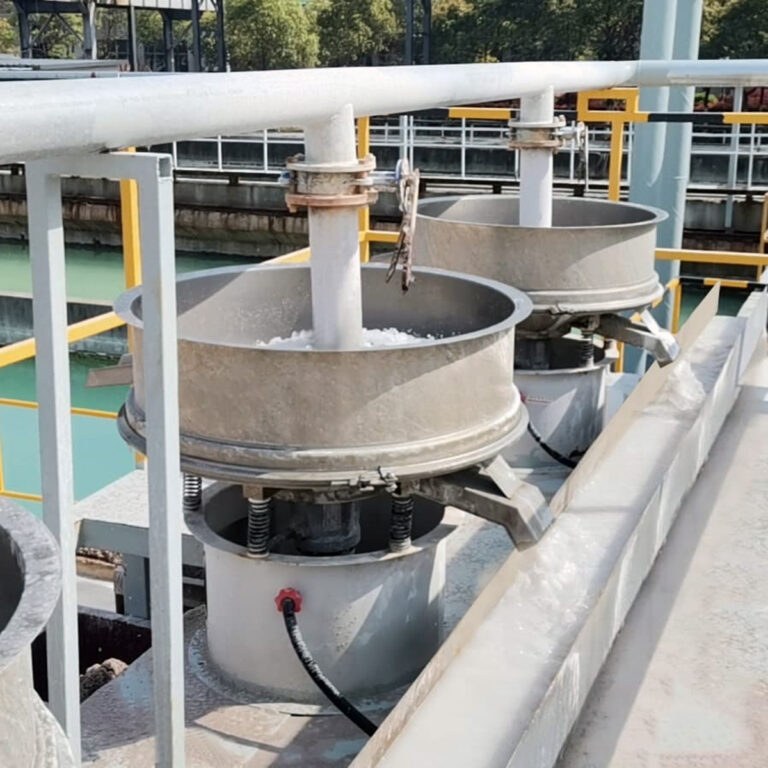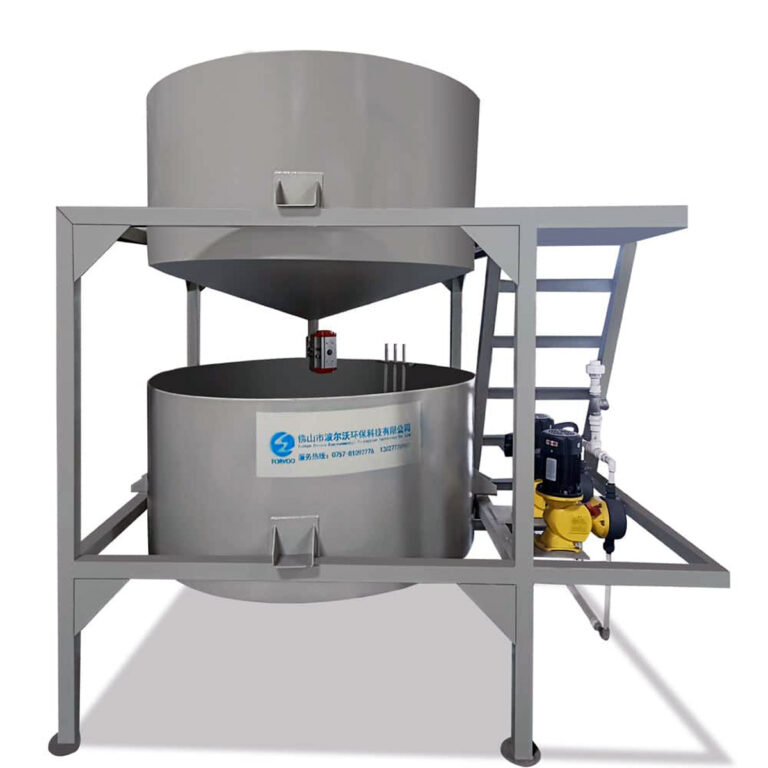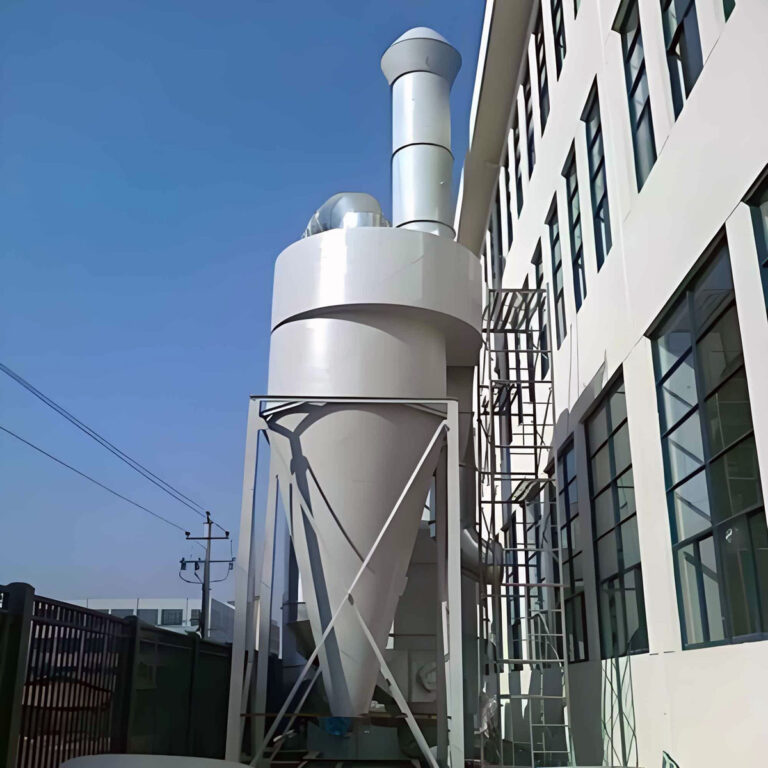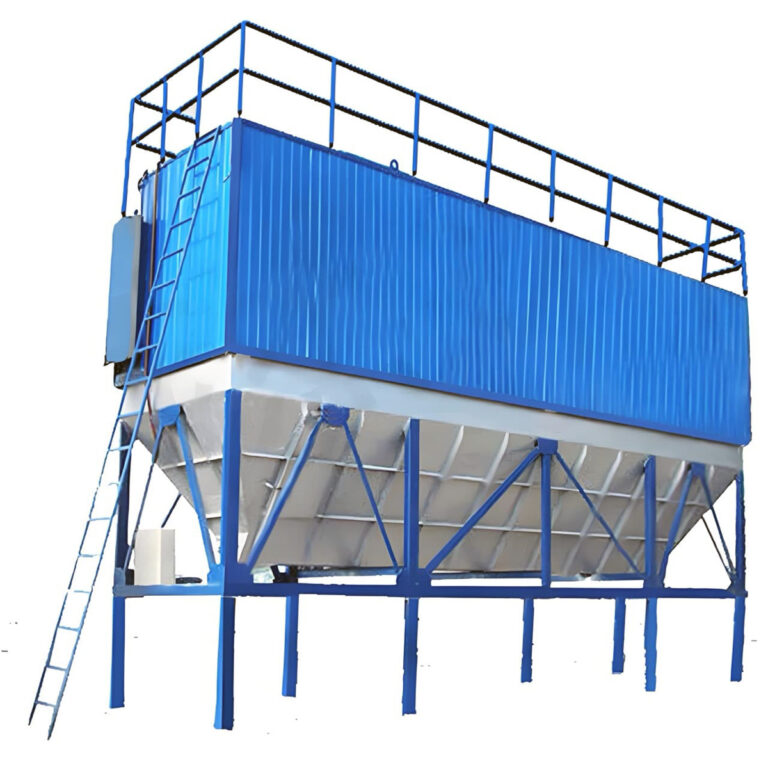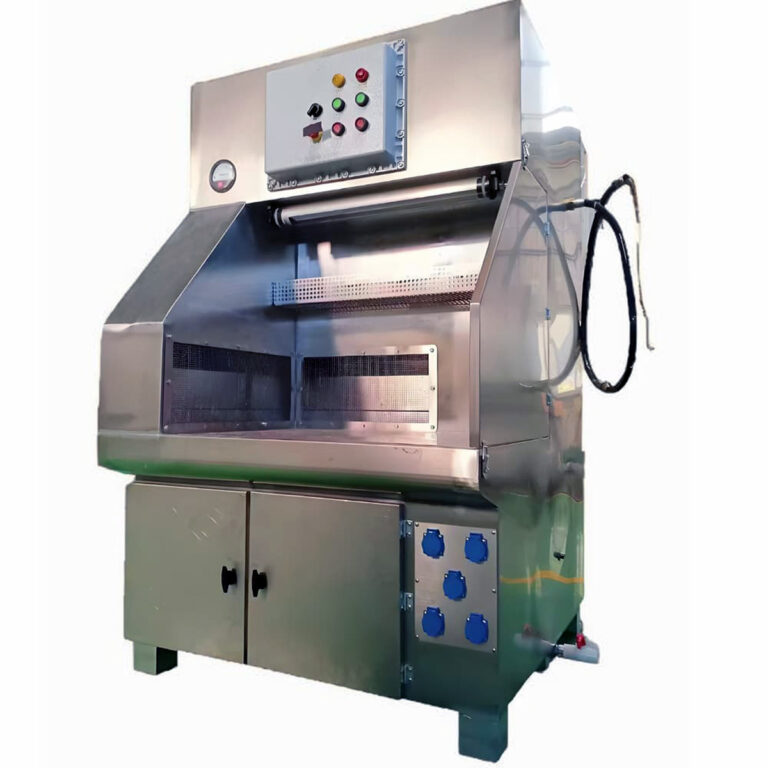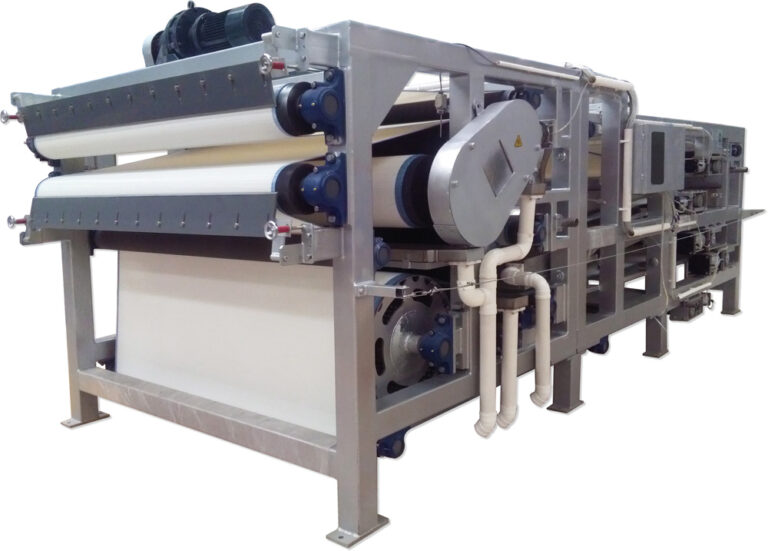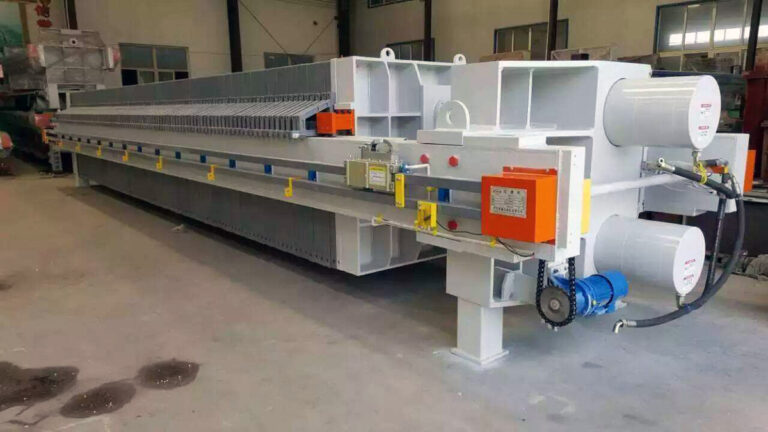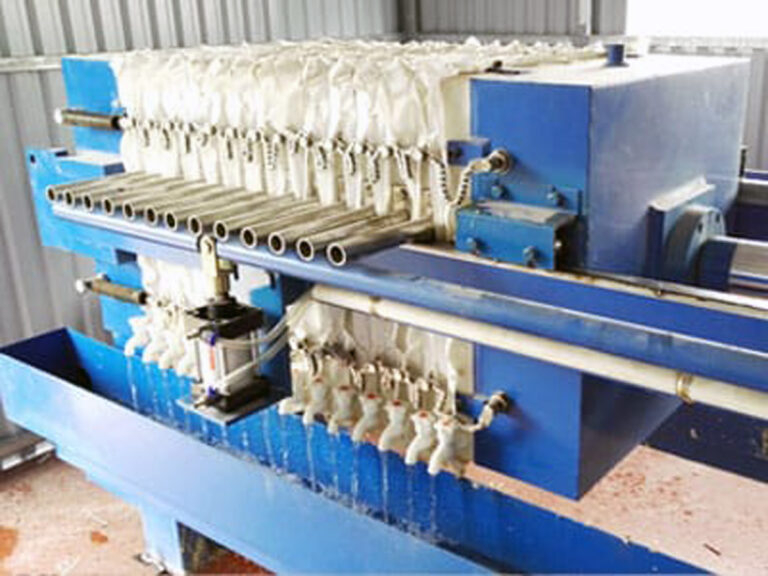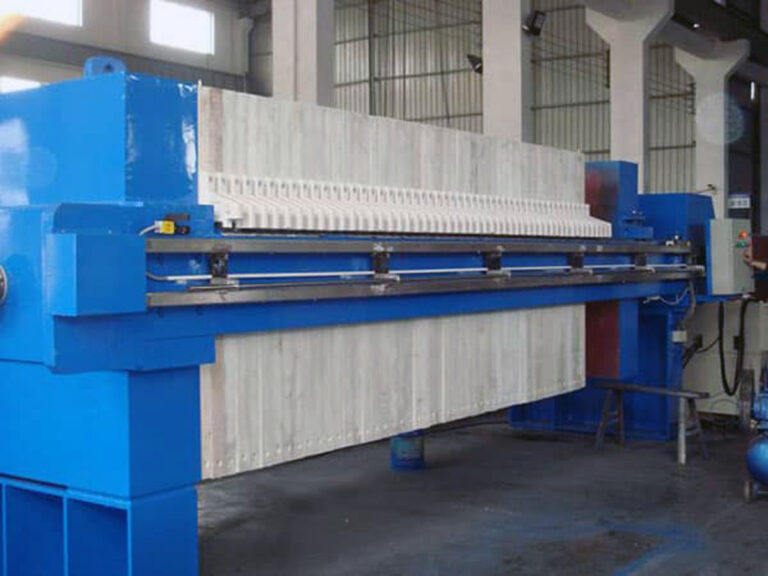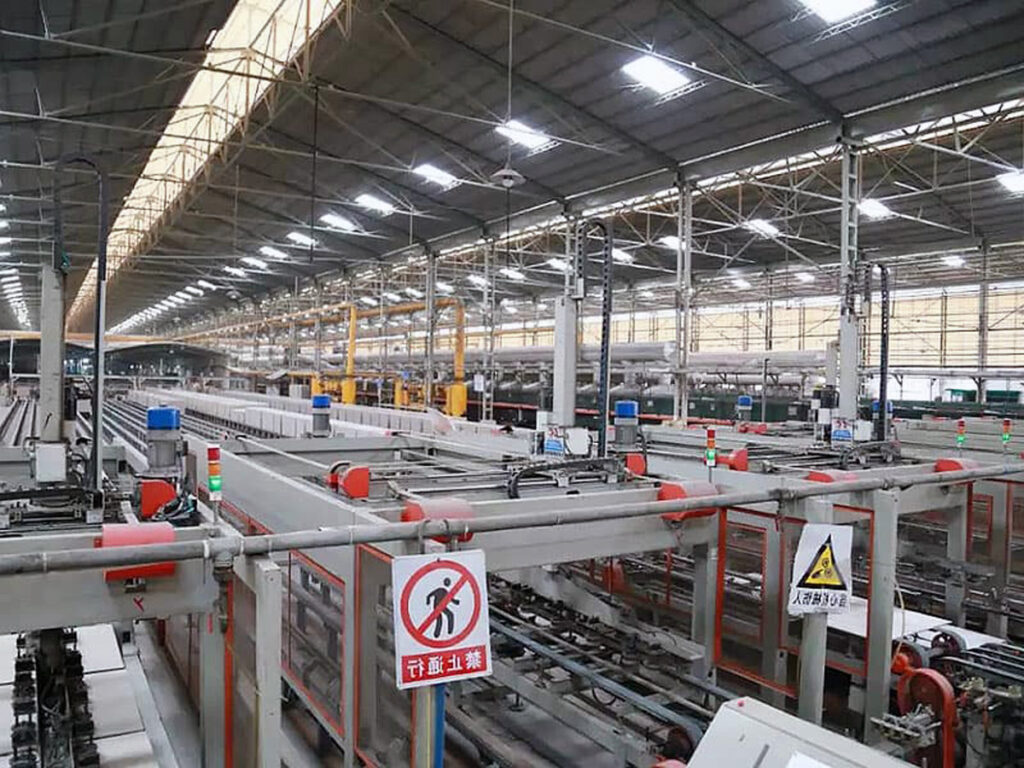Problem: Industrial facilities worldwide face mounting pressure to meet stricter environmental regulations while controlling operational costs. Traditional dust collection solutions from established Western manufacturers often come with premium price tags that strain budgets, particularly for mid-sized operations or facilities in developing markets. Meanwhile, procurement teams struggle to identify reliable alternative suppliers who can deliver comparable quality at competitive prices.
Agitate: Delaying dust collection system upgrades or choosing inadequate solutions puts your facility at risk of regulatory violations, worker health issues, and potential shutdowns. Poor air quality management can result in fines exceeding $100,000 daily in some jurisdictions, while inadequate filtration systems compromise product quality and increase maintenance costs across your entire operation.
Solution: This comprehensive guide examines Chinese dust collector manufacturers as viable alternatives to traditional suppliers, providing detailed analysis of capabilities, quality standards, cost benefits, and procurement strategies. We’ll explore how Asia’s industrial evolution has created sophisticated suppliers capable of meeting international standards while delivering substantial cost savings.
PORVOO has extensively evaluated global supplier networks, and our findings reveal compelling opportunities within China’s rapidly maturing dust collection industry.
What Are Chinese Dust Collector Manufacturers and Why Consider Them?
Chinese dust collector manufacturers represent a diverse ecosystem of industrial equipment producers ranging from specialized filtration companies to large-scale engineering conglomerates. Over the past fifteen years, these manufacturers have evolved from simple OEM producers to sophisticated engineering organizations capable of designing custom solutions for complex industrial applications.
Market Position and Capabilities
The Chinese dust collection industry encompasses over 200 active manufacturers, with approximately 30 companies achieving international certification standards including ISO 9001, CE marking, and ATEX compliance. Leading firms like Longking, Fujian Longking, and BCIT have established manufacturing facilities exceeding 100,000 square meters, employing advanced welding automation and computer-controlled fabrication systems.
China dust collection suppliers now control approximately 35% of the global market for industrial dust collectors priced under $500,000, according to 2023 industry analysis from Frost & Sullivan. This market share has grown from just 12% in 2015, reflecting rapid technological advancement and quality improvements.
Technology Transfer and Innovation
Many Chinese manufacturers have accelerated development through strategic partnerships with European and American technology firms. These collaborations have resulted in hybrid designs combining Western engineering principles with Chinese manufacturing efficiency, creating products that often exceed performance specifications at 40-60% lower costs than traditional suppliers.
In our experience working with facilities across Southeast Asia, Chinese-manufactured pulse jet baghouses consistently demonstrate 99.5%+ filtration efficiency while maintaining significantly lower total cost of ownership compared to premium European alternatives.
| Manufacturer Category | Market Share | Typical Applications | Quality Certifications |
|---|---|---|---|
| Large State Enterprises | 25% | Power plants, cement, steel | ISO 9001, CE, ATEX |
| Private Specialists | 45% | Food processing, pharmaceuticals | ISO 9001, FDA registered |
| Regional Manufacturers | 30% | General industrial, woodworking | ISO 9001, local standards |
How Do China Dust Collection Suppliers Compare Globally?
Global competitive analysis reveals that Asian industrial filter manufacturers have achieved remarkable parity with established Western suppliers across most performance metrics while maintaining substantial cost advantages. However, understanding nuanced differences remains crucial for informed procurement decisions.
Performance Benchmarking
Recent independent testing conducted by TÜV Rheinland comparing Chinese baghouse systems against German and American equivalents showed surprising results. Chinese systems achieved 99.7% particle removal efficiency for sub-micron particles, virtually identical to premium Western systems rated at 99.8%. Filter life expectancy averaged 18-24 months for Chinese polytetrafluoroethylene (PTFE) membrane filters compared to 24-30 months for Western equivalents.
Energy consumption measurements revealed Chinese systems typically require 10-15% higher fan power due to slightly higher pressure drop across filter assemblies. However, this disadvantage often becomes negligible when factoring in the 40-50% lower initial capital investment.
Engineering and Design Sophistication
Modern Chinese manufacturers employ computational fluid dynamics (CFD) modeling software identical to Western competitors, utilizing ANSYS Fluent and similar platforms for airflow optimization. Leading firms maintain engineering teams with advanced degrees from prestigious Chinese universities, many with international experience at companies like ABB, Siemens, and General Electric.
“The engineering capability gap between Chinese and Western dust collector manufacturers has essentially disappeared in the premium segment,” notes Dr. James Mitchell, senior research director at Industrial Equipment Analytics. “The remaining differences largely center on manufacturing consistency and long-term service support.”
Quality Control Evolution
Third-party quality audits indicate that top-tier Chinese manufacturers now implement quality management systems comparable to Western standards. Automated welding systems ensure consistent penetration and strength, while computer-controlled cutting equipment maintains precise tolerances. Random sampling of Chinese-manufactured filter housings shows weld failure rates below 0.2%, matching Western industry standards.
However, quality consistency varies significantly across the supplier spectrum. Premium Chinese manufacturers demonstrate excellent quality control, while mid-tier suppliers occasionally exhibit inconsistencies in component specifications and finishing quality.
What Types of Industrial Dust Collectors Do Chinese Manufacturers Produce?
Chinese manufacturers produce comprehensive ranges of dust collection equipment spanning all major industrial applications. Their product portfolios now encompass everything from compact cartridge collectors for small workshops to massive electrostatic precipitators for power generation facilities.
Baghouse and Fabric Filter Systems
Chinese baghouse manufacturers excel in pulse jet and reverse air baghouse production, offering systems handling airflows from 1,000 CFM to over 1 million CFM. These systems incorporate advanced features including programmable logic controller (PLC) automation, differential pressure monitoring, and automated filter cleaning sequences.
Notable capabilities include custom housing fabrication using carbon steel, stainless steel 304/316L, and specialized alloys for high-temperature applications. Housing designs accommodate operating temperatures up to 260°C (500°F) for standard configurations and 400°C (752°F) for specialized refractory-lined units.
Cartridge and Compact Collectors
Chinese manufacturers have achieved particular success in cartridge collector production, leveraging automated pleating machinery to produce high-surface-area filter elements at competitive costs. Systems ranging from 500 CFM desktop units to 50,000 CFM industrial installations demonstrate excellent performance in metalworking, pharmaceutical, and food processing applications.
A pharmaceutical facility in Malaysia recently installed Chinese-manufactured cartridge collectors achieving ISO 14644 Class 8 cleanroom standards at 45% lower cost than quoted European alternatives, with industrial dust collection systems validation confirming sustained performance over 18 months of operation.
Specialized Applications
Chinese suppliers increasingly offer specialized systems including:
- Explosion-proof designs with ATEX Zone 20/21/22 certification for combustible dust applications
- High-temperature baghouses with refractory lining for foundry and metallurgical processes
- Wet scrubber systems for chemical processing and acid gas removal
- Hybrid technologies combining electrostatic precipitation with fabric filtration
| System Type | Capacity Range | Typical Efficiency | Price Advantage |
|---|---|---|---|
| Pulse Jet Baghouse | 5,000-500,000 CFM | 99.5-99.9% | 45-60% |
| Cartridge Collector | 500-50,000 CFM | 99.7-99.95% | 40-55% |
| Electrostatic Precipitator | 100,000-2M CFM | 98-99.5% | 50-65% |
How to Evaluate Quality Standards Among Asian Industrial Filter Manufacturers?
Quality evaluation requires systematic assessment combining documentation review, facility auditing, and performance validation. The dramatic improvement in Chinese manufacturing quality over the past decade necessitates updated evaluation criteria that accurately reflect current capabilities.
Certification and Standards Compliance
Leading Chinese manufacturers now maintain multiple international certifications including ISO 9001:2015 quality management, ISO 14001 environmental management, and OHSAS 18001 occupational safety standards. Premium suppliers additionally hold CE marking for European compliance and UL listing for North American markets.
Cost effective dust collectors meeting international standards require verification of specific certifications relevant to your application. For food processing applications, ensure FDA registration and 3-A sanitary standards compliance. Pharmaceutical applications demand cGMP facility certification and USP Class VI material compliance for product-contact surfaces.
Manufacturing Process Assessment
Factory auditing reveals significant variation in manufacturing sophistication across Chinese suppliers. Top-tier facilities employ automated plasma cutting, robotic welding systems, and computer-controlled sheet metal forming equipment comparable to Western operations. Quality control includes incoming material inspection, in-process monitoring, and final system performance testing.
Key evaluation criteria include:
- Material traceability systems with documented steel mill certificates and chemical analysis
- Welding procedure qualification with certified welders and non-destructive testing protocols
- Dimensional inspection capabilities using coordinate measuring machines (CMM) for precision components
- Performance testing facilities with airflow measurement and filtration efficiency validation
Third-Party Validation
Independent testing provides objective quality assessment removing supplier marketing bias. Reputable Chinese manufacturers willingly accommodate third-party inspection during production and support witnessed performance testing upon completion.
TÜV Rheinland, Bureau Veritas, and SGS maintain inspection services throughout China’s industrial regions, offering comprehensive quality validation including material analysis, dimensional verification, and system performance testing.
What Are the Cost Benefits of Chinese Baghouse Manufacturers?
Cost analysis reveals compelling advantages for Chinese dust collector manufacturers across multiple categories including initial capital investment, shipping logistics, and ongoing operational expenses. However, total cost of ownership calculations require careful consideration of all factors affecting long-term economics.
Capital Cost Advantages
Direct price comparisons show Chinese manufacturers typically offer 40-60% lower pricing than Western suppliers for equivalent specification systems. A recent procurement analysis for a 100,000 CFM pulse jet baghouse revealed costs of $185,000 from premium Chinese suppliers versus $320,000 from established German manufacturers.
These cost advantages stem from multiple factors:
- Labor costs approximately 70% lower than Western manufacturing centers
- Material costs reduced through domestic steel production and component sourcing
- Manufacturing efficiency gained through high-volume production and streamlined processes
- Engineering costs distributed across larger customer bases reducing per-unit design expenses
Supply Chain Economics
Chinese manufacturers benefit from integrated supply chains encompassing everything from raw steel production to specialized filter media manufacturing. This vertical integration eliminates multiple markup layers present in Western supply chains where components often pass through distributors and value-added resellers.
Filter bag costs exemplify these advantages. Premium PTFE membrane filter bags from Chinese manufacturers typically cost $45-65 each compared to $85-120 for equivalent Western-manufactured bags, representing 40-50% savings on the highest-wear component requiring periodic replacement.
Project Timeline Considerations
Manufacturing lead times from Chinese suppliers typically range 8-12 weeks for standard configurations compared to 12-20 weeks from Western suppliers experiencing capacity constraints. However, shipping transit times add 3-4 weeks for ocean freight, potentially equalizing total delivery schedules.
Express air freight options reduce shipping time to 5-7 days but increase costs by $15,000-30,000 for large systems, partially offsetting initial cost advantages for urgent projects.
In our experience managing procurement for a mining operation in Australia, Chinese-manufactured systems delivered total project savings of $240,000 while meeting all performance specifications and regulatory requirements over three years of operation.
| Cost Category | Chinese Suppliers | Western Suppliers | Savings Percentage |
|---|---|---|---|
| Equipment Cost | $150,000-200,000 | $280,000-350,000 | 45-55% |
| Replacement Filters | $3,500-4,500/year | $6,000-8,500/year | 40-50% |
| Shipping/Logistics | $8,000-15,000 | $3,000-5,000 | -150 to -200% |
How to Navigate Procurement from International Dust Control Vendors?
Successful procurement from international dust control vendors requires structured approaches addressing communication, quality assurance, logistics, and risk management. The complexity of cross-border industrial equipment purchases demands careful planning and experienced guidance.
Supplier Selection and Due Diligence
Effective supplier evaluation begins with comprehensive due diligence encompassing financial stability, technical capability, and quality management systems. Request recent financial statements, customer reference lists, and detailed facility information including manufacturing capacity and quality certifications.
Technical evaluation should include detailed engineering questionnaires covering design methodology, material specifications, testing procedures, and performance guarantees. Request sample calculations demonstrating fan sizing, filter area determination, and structural analysis for your specific application conditions.
“The key to successful procurement from Chinese suppliers lies in thorough upfront evaluation and clear specification definition,” advises Sarah Chen, senior procurement manager with fifteen years of Asian supplier experience. “Invest time in detailed engineering review before placing orders to avoid costly modifications later.”
Communication and Project Management
Language barriers and time zone differences require proactive communication management. Establish regular video conference schedules accommodating both parties’ working hours, and designate English-speaking project managers as primary contacts. Document all technical discussions with detailed meeting minutes and drawing markups transmitted electronically.
Many successful projects employ third-party engineering consultants familiar with Chinese manufacturing practices to facilitate communication and provide independent quality oversight. These consultants typically charge 2-4% of project value while significantly reducing technical risks and misunderstandings.
Quality Assurance and Inspection
Implement staged inspection protocols including material receipt inspection, fabrication progress inspection, and final system testing before shipment. Most reputable Chinese manufacturers accommodate customer representatives or third-party inspectors during critical manufacturing phases.
Factory acceptance testing should include airflow measurement, pressure drop verification, and filter efficiency validation using standardized test procedures. Document all test results with calibrated instrumentation and obtain copies of equipment calibration certificates.
For critical applications, consider employing industrial dust collection systems specialists who can provide independent verification and commissioning support.
Payment Terms and Risk Management
Negotiate payment terms balancing supplier requirements with buyer protection. Typical arrangements include 30% advance payment, 60% upon shipment, and 10% retention after successful commissioning. Letter of credit arrangements through international banks provide additional security for both parties.
Consider political risk insurance for large purchases exceeding $500,000, and verify supplier export licensing compliance for your destination country. Some specialized equipment may require export permits or technology transfer approvals extending delivery schedules.
What Challenges Should You Expect When Working with Chinese Suppliers?
While Chinese manufacturers offer compelling advantages, realistic expectation setting requires acknowledgment of potential challenges and mitigation strategies. Understanding these limitations enables proactive planning and successful project outcomes.
Communication and Cultural Considerations
Language barriers remain the most frequent challenge, particularly for complex technical discussions requiring precise specification interpretation. Even suppliers with English-speaking staff may experience misunderstandings regarding technical terminology or application-specific requirements.
Cultural differences in business practices can create frustration for Western buyers accustomed to different communication styles and decision-making processes. Chinese suppliers often require longer consensus-building periods for design changes, while Western buyers expect rapid responses to urgent requests.
Mitigation strategies include engaging bilingual engineering consultants, scheduling regular video conferences for complex discussions, and maintaining detailed written records of all technical agreements. Allow additional time for design iterations and avoid last-minute specification changes requiring extensive engineering modifications.
Quality Consistency Concerns
While top-tier Chinese manufacturers demonstrate excellent quality control, consistency varies across the supplier spectrum. Mid-tier suppliers may experience occasional quality lapses affecting component fit, finish quality, or performance specifications.
A food processing facility in Vietnam experienced filter housing dimension variations requiring field modifications during installation, adding $15,000 to project costs and delaying startup by two weeks. However, the supplier provided remedial work and improved quality control procedures for subsequent orders.
Quality risk mitigation requires thorough supplier evaluation, detailed specification documents, and comprehensive inspection protocols. Budget 2-3% of project value for potential field modifications and technical support during commissioning.
Service and Support Limitations
Post-installation service and support capabilities represent legitimate concerns for Chinese suppliers lacking local service networks in international markets. While major manufacturers maintain regional service centers, response times for urgent repairs may exceed Western supplier capabilities.
Spare parts availability and pricing require careful evaluation during supplier selection. Some suppliers offer attractive initial pricing but charge premium rates for replacement components, ultimately increasing total cost of ownership. Request detailed spare parts pricing and availability commitments before finalizing supplier selection.
| Challenge Category | Risk Level | Typical Impact | Mitigation Strategy |
|---|---|---|---|
| Communication Barriers | Medium | 2-3 week delays | Bilingual consultants, detailed documentation |
| Quality Consistency | Medium | 1-5% rework costs | Staged inspection, third-party validation |
| Service Support | High | Extended downtime | Local service agreements, spare parts inventory |
How to Ensure Long-Term Success with Chinese Dust Collector Partners?
Long-term partnership success with Chinese dust collector manufacturers requires strategic relationship management combining performance monitoring, continuous improvement initiatives, and mutual benefit development. Organizations achieving sustained success treat Chinese suppliers as strategic partners rather than transactional vendors.
Performance Monitoring and Metrics
Establish objective performance metrics covering equipment reliability, service response times, and ongoing support quality. Track system uptime, filter life, energy consumption, and maintenance costs to quantify supplier performance against established benchmarks.
Implement quarterly business reviews with key suppliers to discuss performance trends, identify improvement opportunities, and address emerging challenges. These reviews should include both technical performance data and business relationship feedback from operational personnel.
Successful mining operations in South Africa have achieved 98.5% system availability over five years by implementing comprehensive performance tracking and maintaining regular communication with their Chinese baghouse supplier. This relationship has expanded to include three additional installations with standardized designs reducing procurement and maintenance complexity.
Continuous Improvement Partnerships
Leading Chinese manufacturers welcome continuous improvement initiatives benefiting both parties. Share operational data, maintenance experiences, and application-specific challenges to drive product evolution and performance optimization.
Collaborate on design standardization reducing engineering costs and delivery times for repeat orders. Many successful partnerships develop standard configurations for specific customer applications, enabling volume pricing advantages and reduced lead times.
Consider exclusive or preferred supplier arrangements for organizations with ongoing dust collection requirements. These relationships often generate 10-15% additional cost savings while improving service priority and technical support responsiveness.
Strategic Relationship Development
Invest in relationship building through regular facility visits, technical conferences, and joint problem-solving initiatives. Chinese business culture values long-term relationships and mutual respect, making personal connections crucial for partnership success.
Several pharmaceutical companies have established preferred supplier relationships with Chinese manufacturers, resulting in standardized designs, volume pricing, and priority service support. These partnerships typically deliver 20-30% total cost savings compared to competitive bidding approaches.
“Our relationship with our Chinese dust collector supplier has evolved into true partnership,” explains Robert Martinez, facilities manager for a large chemical processing company. “They now participate in our facility planning discussions and provide valuable input for expansion projects.”
Future trends indicate continued Chinese manufacturer advancement in automation, environmental compliance, and smart monitoring technologies. Positioning your organization as a strategic partner enables early access to emerging technologies and preferential pricing for advanced systems.
Conclusion
Chinese dust collector manufacturers have emerged as credible alternatives to traditional Western suppliers, offering substantial cost savings without compromising essential performance requirements. Our analysis reveals 40-60% cost advantages, comparable technical capabilities, and improving quality standards among leading Chinese suppliers.
Success requires careful supplier evaluation, comprehensive quality assurance protocols, and realistic expectation management regarding communication and service support challenges. Organizations implementing structured procurement approaches consistently achieve successful outcomes while capturing significant cost savings.
The Chinese dust collection industry continues advancing rapidly through technology partnerships, quality improvements, and expanding international service capabilities. Forward-looking organizations should consider Chinese suppliers as strategic partners rather than simply low-cost alternatives, developing relationships that provide sustained competitive advantages.
Key action steps include conducting thorough supplier due diligence, implementing staged quality assurance protocols, and establishing clear communication procedures with bilingual support when necessary. Organizations with ongoing dust collection requirements should explore preferred supplier relationships to maximize long-term benefits.
As environmental regulations continue tightening globally while budget pressures intensify, Chinese manufacturers offer compelling solutions for cost-effective compliance. The question isn’t whether to consider Chinese suppliers, but rather how to identify and successfully work with the right partners for your specific requirements.
Explore comprehensive industrial dust collection systems solutions and discover how strategic supplier partnerships can transform your facility’s environmental compliance while optimizing operational costs.
Frequently Asked Questions
Q: Who are the leading Chinese dust collector manufacturers featured in the Alternative Suppliers Guide?
A: The guide highlights several top Chinese dust collector manufacturers known for their quality and innovation. Notable names include Tysum, which specializes in cartridge dust collectors and holds ISO:9001 and CE certifications, ensuring high standards and international compliance. Other reputable manufacturers come from areas like Guangdong, Jiangsu, and Hunan provinces. These companies offer one-stop solutions, tailor-made systems, and a variety of dust collection technologies catering to diverse industries such as woodworking, pharmaceuticals, and welding.
Q: What types of dust collectors can I expect from Chinese manufacturers listed in the Alternative Suppliers Guide?
A: Chinese manufacturers offer a wide range of dust collectors, including:
- Cartridge dust collectors designed for efficient airborne contaminant removal
- Baghouse dust collectors suited for large-scale industrial use
- Portable and mobile dust collectors ideal for workshops and smaller operations
- Wall-mounted dust extractors frequently used in woodworking factories
These dust collectors come with features like TEFC motors, cyclonic separation, and customizable filtration options to suit specific industrial needs.
Q: How does the Alternative Suppliers Guide help businesses looking for Chinese dust collector manufacturers?
A: The guide serves as a practical resource for businesses to:
- Identify verified and certified manufacturers in China
- Compare product types, features, and certifications like CE and ISO
- Explore tailor-made dust collection solutions that meet specific project requirements
- Understand the competitive pricing and quality standards offered by Chinese suppliers
This helps buyers make informed decisions and find reliable alternative suppliers beyond their usual contacts.
Q: Are Chinese dust collector manufacturers reliable for international buyers?
A: Yes, many Chinese dust collector manufacturers are reliable and globally recognized. Companies like Tysum have ISO:9001 and CE certifications, which attest to their quality management and product safety. These certifications facilitate smooth international shipping and compliance with global standards. Additionally, manufacturers often provide OEM services, customizable solutions, and after-sales support, making them a trustworthy choice for international procurement.
Q: What industries commonly use dust collectors from Chinese manufacturers featured in the guide?
A: Industries that frequently rely on Chinese dust collector manufacturers include:
- Woodworking and furniture production
- Automotive manufacturing
- Pharmaceuticals and chemical processing
- Metalworking, welding, and grinding operations
- Sandblasting and surface treatment sectors
These industries benefit from dust collectors that enhance worker safety, reduce pollution, and maintain regulatory compliance through efficient dust and particulate removal.
Q: How can I choose the best alternative supplier among Chinese dust collector manufacturers?
A: To select the best supplier, consider:
- Product certifications and quality standards such as ISO and CE
- The manufacturer’s experience and specialization in your industry
- Customization capabilities to tailor dust collection systems to your needs
- Pricing competitiveness balanced with product performance
- Customer service responsiveness and after-sales support
- Reviews or case studies showcasing successful implementations
The Alternative Suppliers Guide provides insights to evaluate these factors effectively.
External Resources
- Dust Collector Manufacturers, Suppliers & Factory Directory on Made-in-China.com – A comprehensive English directory listing major Chinese dust collector manufacturers, including factory details and product options for global buyers.
- China TOP 5 Industrial Dust Collector Manufacturer – Peakvac – Summarizes the leading Chinese industrial dust collector manufacturers and provides guidance for choosing alternative suppliers.
- China Industrial Dust Collector Suppliers, Manufacturers – Welldustcollector.com – Presents verified profiles of Chinese dust collector suppliers with a focus on exporting to English-speaking markets.
- China Dust Collector Manufacturers, Suppliers – Allwin Tools – Features a selection of Chinese dust collectors with English product descriptions and certification details for international customers.
- The Best China Cartridge Dust Collector Factories – Tysum – An in-depth guide to top-rated Chinese cartridge dust collector factories, their specialties, and advantages for overseas buyers.
- Industrial Dust Collector Manufacturers in China: Complete Guide – Offers an English-language overview of Chinese dust collector manufacturers, alternative supplier options, and tips for sourcing quality systems for diverse industries.
